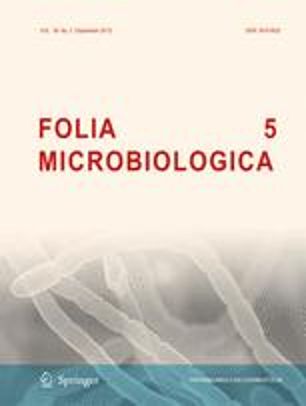Ver ítem
- xmlui.general.dspace_homeCentros e Institutos de InvestigaciónCICVyA. Centro de Investigación en Ciencias Veterinarias y AgronómicasInstituto de PatobiologíaArtículos científicosxmlui.ArtifactBrowser.ItemViewer.trail
- Inicio
- Centros e Institutos de Investigación
- CICVyA. Centro de Investigación en Ciencias Veterinarias y Agronómicas
- Instituto de Patobiología
- Artículos científicos
- Ver ítem
Isolation of Pseudobutyrivibrio ruminis and Pseudobutyrivibrio xylanivorans from rumen of Creole goats fed native forage diet
Resumen
We isolated and identified functional groups of bacteria in the rumen of Creole goats involved in ruminal fermentation of native forage shrubs. The functional bacterial groups were evaluated by comparing the total viable, total anaerobic, cellulolytic, hemicellulolytic, and amylolytic bacterial counts in the samples taken from fistulated goats fed native forage diet (Atriplex lampa and Prosopis flexuosa). Alfalfa hay and corn were used as control diet.
[ver mas...]
We isolated and identified functional groups of bacteria in the rumen of Creole goats involved in ruminal fermentation of native forage shrubs. The functional bacterial groups were evaluated by comparing the total viable, total anaerobic, cellulolytic, hemicellulolytic, and amylolytic bacterial counts in the samples taken from fistulated goats fed native forage diet (Atriplex lampa and Prosopis flexuosa). Alfalfa hay and corn were used as control diet. The roll tubes method increased the possibility of isolating and 16S rDNA gene sequencing allowed definitive identification of bacterial species involved in the ruminal fermentation. The starch and fiber contents of the diets influenced the number of total anaerobic bacteria and fibrolytic and amylolytic functional groups. Pseudobutyrivibrio ruminis and Pseudobutyrivibrio xylanivorans were the main species isolated and identified. The identification of bacterial strains involved in the rumen fermentation helps to explain the ability of these animals to digest fiber plant cell wall contained in native forage species.
[Cerrar]

Autor
Grilli, Diego Javier;
Ceron Cucchi, Maria Esperanza;
Paez Lama, Sebastián Antonio;
Egea, Angela Vanina;
Schnittger, Leonhard;
Cravero, Silvio Lorenzo Pedro;
Sosa Escudero, Miguel Angel;
Allegretti, Liliana Inés;
Arenas, Graciela Nora;
Fuente
Folia Microbiologica 58 (5) : 367–373 (September 2013)
Fecha
2013-09
Editorial
Springer
ISSN
0015-5632
1874-9356
1874-9356
Formato
pdf
Tipo de documento
artículo
Palabras Claves
Derechos de acceso
Restringido
 Excepto donde se diga explicitamente, este item se publica bajo la siguiente descripción: Creative Commons Attribution-NonCommercial-ShareAlike 2.5 Unported (CC BY-NC-SA 2.5)
Excepto donde se diga explicitamente, este item se publica bajo la siguiente descripción: Creative Commons Attribution-NonCommercial-ShareAlike 2.5 Unported (CC BY-NC-SA 2.5)

